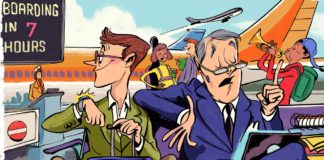Former Whanganui mayor Charles Mackay, who shot writer Walter D’Arcy Cresswell. Photo / Supplied
He had a long career in public service and was responsible for economic growth in Whanganui.
But the efforts of the town’s mayor Charles Mackay were all but expunged from local history after he shot a writer who accused him of making sexual advances toward him and ordered him to quit his job or he’d out him as gay.
In 1920, Mackay was convicted of attempted murder and sentenced to 15 years in prison with hard labour. He was released in 1926 on condition he leave the country, so he moved to England.
Mackay was soon working in Berlin as a part-time journalist, and was covering communist street riots in 1929 when he was mistakenly shot dead by a policeman.
/cloudfront-ap-southeast-2.images.arcpublishing.com/nzme/U4ZHNYQTUVEHVQ6EJ7SERQTWXM.jpg)
This extract from Paul Diamond’s new book, Downfall: The Destruction of Charles Mackay, details the day Mackay’s life changed forever.
‘Nothing abnormal happened while at dinner’
The two men had first met the day Walter D’Arcy Cresswell arrived in Whanganui from Timaru. Mayor Charles Mackay invited the younger man and his cousin (who has never been identified) to dinner that night at the Chavannes Hotel, on Victoria Avenue, close to the Sarjeant Gallery. It is not known why Cresswell, who had come to visit family, had dinner on his first night in town with the mayor, whom he had never met before.
Did Mackay know about him? Or did the cousin bring them together? Cresswell’s statement to the police gave no insight into their connection.
“Nothing abnormal happened while at dinner,” Cresswell noted in his statement to the police. “I spoke to Mr MacKay between the time I had dinner with him on Monday night and entering his office on Saturday morning last the 15th instant. My cousin and myself went to Hawera races [89 kilometres north of Whanganui] Tuesday the 11th instant and returned to Wanganui the following evening.”
/cloudfront-ap-southeast-2.images.arcpublishing.com/nzme/DDAJGN3MQVVQNF5XLVHFMNYHSY.jpg)
On Thursday, the day after his return from Taranaki, Cresswell invited Mackay to dinner, again with his cousin. This time the trio dined at the Rutland Hotel, on the corner of the Avenue — as Whanganui locals call Victoria Avenue — and Ridgway Street.
This meal led to a further invitation from Mackay to visit the Sarjeant Gallery, which had opened the year before — Mackay had been a driving force in its construction — the following afternoon. He and Cresswell met in the Ridgway Street office before walking to the Wanganui Club in St Hill Street for a cup of tea and then going on to the gallery.
On their way, they passed the town’s underground urinals, which still exist but were closed around the time of World War II, following complaints that they were “detrimental to the best interests of the business premises in the neighbourhood”.
As in other urban areas in the 1920s, the urinals were a meeting place for men seeking sex with other men. Case files for indecency cases in the town testify to the existence of what British historian Matt Houlbook has termed a network of sexual opportunity. Men would meet in bars or on the street but, unable to go back to boarding houses where they might be seen by nosy landladies, they would go to a public place like the urinals or, in Whanganui’s case, Queens Park.
/cloudfront-ap-southeast-2.images.arcpublishing.com/nzme/NDYCQEDT4K7AL5PPV2PWI4LEKI.jpg)
By May 1920, when Mackay was showing the gallery to D’Arcy Cresswell, the Sarjeant Gallery had been open for only eight months and did not have much of a collection; the initial exhibitions were of borrowed items. On permanent display already, though, was a marble, three-quarter-sized copy of Raffaello Romanelli’s The Wrestlers, the original of which resides in Florence’s Uffizi Gallery.
Ellen Neame, the much younger widow of Henry Sarjeant, and her second husband John Neame, the art master at Wanganui Collegiate, whom she married less than a year after her first husband died, had bought the sculpture in 1914 while in Florence. At that time buying copies, either reproductions or plaster casts, was commonplace and respectable, a way of allowing visitors to see famous works. The Wrestlers, itself a Roman marble copy of a lost third-century Greek bronze, has been extensively reproduced.
The one other copy in New Zealand is in the Dunedin Public Art Gallery, having been presented to the gallery in 1928 by wealthy Dunedin businessman and philanthropist David Theomin. Whanganui could not compete with the size and wealth of Dunedin, but the Neames clearly had similar aspirations for the Sarjeant. John Neame considered The Wrestlers as perhaps one of the six most famous works of Greek art in the world.
The Wrestlers is also famous among homosexual men, who have admired the entwined naked male bodies for their homoerotic beauty and association with what the Romans called ‘the way of the Greeks’. As Robert Aldrich has explained, ‘Greek love’ was the most clearly articulated and influential homosexual subculture before the words homosexual or subculture were invented.
Homosexual men experienced it both by travelling to southern Europe and through the art and literature of the period. This was important at a time when homosexuality was condemned. During the 20th century, this classical focus was overtaken by the development of new subcultures in places such as Berlin, New York and San Francisco, but in 1920, cultured men like Mackay and Cresswell would have recognised the coded significance of The Wrestlers.
/cloudfront-ap-southeast-2.images.arcpublishing.com/nzme/M5ZRMQGK3ISQSOFJ5KEQUVJC6M.jpg)
Things take a turn
According to Cresswell’s statement to the police, after the gallery visit, things turned nasty: “When we left the Art Gallery we went to Mr MacKay’s office in Ridgway Street and while there I discovered a certain disgusting feature in Mr MacKay’s character. I purposely encouraged him to display his qualities in his nature which I expected. He also showed me several photographs of nude women. On making that discovery I told him that I had led him on, on purpose to make sure of his dirty intentions, and I told him also amongst a lot of other candid things that he must resign the mayorality [sic] at once.”
How did Cresswell encourage Mackay? Did he make some sort of pass at the older man? Did the men have sex?
Mackay showing Cresswell photos of naked women is a strange segue from viewing a statue of naked men wrestling, but this was not an untypical way of discovering if someone was gay in an era when men were having sex with each other before any modern notion of a gay identity had emerged. If mistaken, the man with the photos could say, “Ah well, I f*** them all”.
The photos could also be used to arouse the other man, which would fit a scenario of offering sex for money. The photos also suggest that Mackay might have thought he had a chance of seducing Cresswell. If so, it was to be a terrible miscalculation.
/cloudfront-ap-southeast-2.images.arcpublishing.com/nzme/6FPQY6GCAN42WDL7IYL66DPOEA.jpg)
Cresswell’s statement to the police was that Mackay “then pleaded for mercy and asked me to think over it for the night, and come and see him next morning and let him know my decision. I stayed at the Rutland Hotel on Friday night as I was going to a dance in the Druid’s Hall that evening. During the night I decided that he should resign the mayorality in a weeks [sic] time”.
By the time of the third meeting in his office, Mackay had become increasingly desperate about his indiscretion with Cresswell, but the younger man remained resolved.
“As arranged, I called on him at 9.30am at his office in Ridgway Street on the Saturday morning, and the whole morning was spent by him in pleading with me on account of his wife and family and not to force him to resign. I, however, was quite determined that he should resign. Even though he threatened to commit suicide, I did not believe that he had the courage. At my suggestion and partly at my dictation, MacKay wrote a letter to my cousin and I saw it posted on Saturday morning. I did not believe him when he said that his wife was dependent on the £200 he got from being mayor. I was very anxious to be just and do nothing cruel to his family.”
/cloudfront-ap-southeast-2.images.arcpublishing.com/nzme/ZA73AMUDPXJB6PZCSNHSC4JPT4.jpg)
£200 was a lot of money in 1920 – roughly the annual salary for a skilled council worker. Mackay’s in-laws, the Duncan family, were wealthy landowners whose assets included property in Whanganui and Christchurch. Perhaps Mackay was unwilling to humiliate himself by asking them for support. Problems with Mackay’s own legal business might also have been a factor; after his conviction, his affairs were described as being in a mess.
The letter Cresswell forced Mackay to write has never emerged and the police do not appear to have pursued it as part of their investigation, even though it was supposedly sent to Cresswell’s cousin and would not have been difficult to find. (This relative managed to stay out of the case entirely; given that the police asked Cresswell about the period when the cousin was present, it is odd that he was not asked to give a statement.)
Unable to reach any resolution, the two men left Mackay’s office: “After useless talking and long silence he asked me to come ’round to the club and try and reconsider my decision over a cup of tea. As I could not stand being in his office much longer, and was very knocked-up, I consented […]”
But if Mackay hoped Cresswell would back off, it did not work. According to Cresswell, he then “became very earnest about his decision to commit suicide, and the absolute impossibility of resigning” and offered a medical explanation for his actions.
“He told me that he was suffering from a complaint which made it impossible for him to control his passions and said that his doctor could satisfy me in that respect. He rang up his doctor on two or three occasions but each time the doctor was out. Nothing more happened here than had happened in his office and he then pleaded with me to come back to his office, I think I was very foolish not to have left him, but I was anxious to be quite just to him. I should say here that I had promised to say nothing about what I discovered if he would resign at the end of the week. I did not want to judge him but I was determined he had no business to be mayor.”
Unresolved
Cresswell’s resolve undiminished, the men walked back to the office for a fourth and final time.
“I, being very tired, took a more determined stand about it and threatened that if he didn’t immediately give me a letter promising to resign at the end of the week I would at once wire to my dad in Timaru to come up as I felt that it was getting too much of a strain on me alone. He seemed so terribly upset that I then extended the time to a fortnight. Then he implored me for a months [sic] time and spoke a lot about his wife and family, I was quite firm about the fortnight and he then asked me for a few minutes alone to clear his head or something of the sort, and went into the Anti [sic] room where the girl worked.”
Mackay returned after a few moments and said, “[G]ive me a month and I will sign a letter straight away.”
Once Cresswell agreed to this, Mackay “came over to his table and wrote a letter promising to resign the mayoralty a month from that date and put it into a large envelope. We then arranged that it should be addressed to me at the general post office, and registered and I promised to let it lie at the post office until the month was up so he put it in his pocket.”
This second resignation letter has also never been found, although the police did try to locate it.
/cloudfront-ap-southeast-2.images.arcpublishing.com/nzme/7A4SIL5Z2OW77QQUGOFKYZNBSY.jpg)
Then, as they approached the door, Mackay turned and pointed a revolver at Cresswell’s chest: “We were only about a foot or two apart, I think that he said this is for you but I am not positive, then he fired almost immediately before I could recover from my amazement and I felt the bullet enter my right breast and I fell down.”
Mackay stood over the prone Cresswell and “thrust” the revolver into his right hand in an effort to make it look as if Cresswell had killed himself.
But Mackay’s bullet had missed his blackmailer’s heart and had instead hit him in his right lung. Cresswell managed to stand up and brandished the revolver at Mackay, holding him at bay. Mackay, who “looked very surprised and wild”, then ran out of the room. Cresswell followed, but when he reached the door into the other office he could not open it: either Mackay had locked it or he was holding onto the handle on the other side.
Cresswell then ran back into the office and hurled the chair through the window to attract attention and assistance: “When I had smashed the window I called out to some chaps on the street to come up. Then eveidently [sic] Mr MacKay hearing my calls for help and thinking he could not escape, came back and asked me to shoot him, and then he rushed me and I kept the revolver pointed clear and pulled all the shots off, the next thing I can remember I was running down the stairs and telling someone that MacKay had shot me, and I heard MacKay say over the stairs that he had shot me by accident, I dont [sic] remember much more. I was wearing the clothes produced when shot.”
/cloudfront-ap-southeast-2.images.arcpublishing.com/nzme/VJ7B3TQQU3U6F4AXYAVRTMNIEE.jpg)
Downfall: The destruction of Charles Mackay
By Paul Diamond
RRP: $45
Published by Massey University Press






